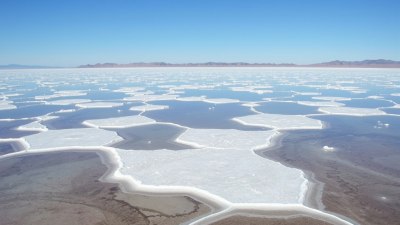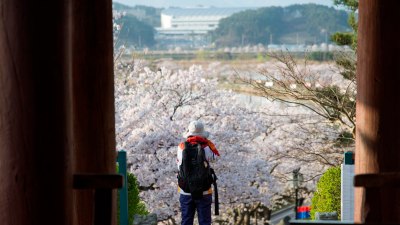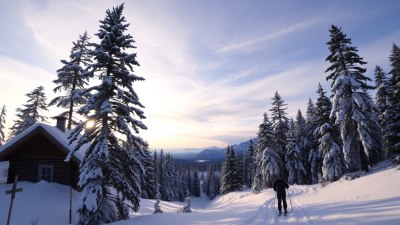Crossing the Salted Ghosts of Former Lakes
Explore the intriguing phenomenon of former lakes turned saline and the ghostly remnants they leave behind.

Image created with Flux Schnell
Throughout history, the evolving landscapes of our planet have been shaped by a variety of natural phenomena, including the rise and fall of lakes. As these bodies of water dry up over time, they can leave behind hauntingly beautiful landscapes characterized by salt flats and ghostly remnants of ecosystems that once thrived. This article delves into the concept of crossing the salted ghosts of former lakes, exploring the scientific, environmental, and cultural implications of these unique sites.
The Formation of Salt Flats
Salt flats, also known as salt pans or salinas, are formations that occur when bodies of water evaporate, leaving behind mineral-rich residues. The process begins with the accumulation of water in a basin, typically in regions where evaporation rates are higher than precipitation. Over time, the water that remains in these basins becomes increasingly saline as minerals concentrate. Once the body of water completely evaporates, the minerals are left behind, creating vast, flat expanses of crystallized salts.
Historical Context
Many of the world's salt flats have fascinating historical contexts. For instance, the Bonneville Salt Flats in Utah, USA, were once part of a massive prehistoric lake known as Lake Bonneville. Similarly, the Salar de Uyuni in Bolivia, the largest salt flat in the world, is the result of the transformation of a giant lake that existed over 30,000 years ago. Understanding these historical contexts provides insight into the geological forces that have shaped our planet and the ecosystems that existed in these now arid environments.
The Ecological Impact
The transition from a thriving lake to a barren salt flat has significant ecological consequences. As lakes dry up, the biodiversity that once existed can dramatically decline. Aquatic species, including fish and amphibians, may face extinction, while terrestrial species that depended on the lake ecosystem may also suffer. However, some salt flats can provide unique habitats for specially adapted organisms. For example, certain microorganisms, such as halophiles, thrive in high-salinity environments and play a crucial role in the ecosystem by recycling nutrients.
Cultural Significance
Crossing the salted ghosts of former lakes often evokes a sense of mystery and wonder. Many cultures throughout history have revered these landscapes, imbuing them with spiritual and cultural significance. For instance, the indigenous peoples of the Andean region have deep connections with the Salar de Uyuni, celebrating it as a sacred site. Moreover, these areas have inspired various forms of artistic expression, from literature to visual arts, capturing the ethereal beauty and haunting desolation of salt flats.
Modern Exploration and Tourism
Today, many former lakes and their corresponding salt flats have become popular tourist destinations. Travelers are drawn to their surreal beauty and unique landscapes, providing opportunities for photography, adventure, and exploration. However, as tourism increases, it is imperative to consider the environmental impact on these delicate ecosystems. Responsible tourism practices, such as minimizing foot traffic and avoiding waste, can help preserve these ghostly landscapes for future generations.
Scientific Research and Discoveries
Scientists are actively studying former lakes and their transformed landscapes to understand their geological and ecological histories. Research in these areas provides valuable data about climate change, water management, and biodiversity conservation. Additionally, some researchers explore the possibility of reestablishing or restoring ecosystems in areas where lakes have dried up, paving the way for innovative approaches to environmental sustainability.
The Intersection of Climate Change
Climate change plays a pivotal role in the processes that lead to the drying of lakes. Altered precipitation patterns, increased temperatures, and extended drought periods are all factors contributing to the evaporation of bodies of water worldwide. Understanding the connection between climate change and the disappearance of lakes is critical to addressing broader environmental issues. Conservation efforts and policy changes are essential to mitigate these effects and protect the ecosystems that rely on freshwater sources.
Future Prospects
As we gaze upon the salted ghosts of former lakes, we are reminded of the transience of nature and the ongoing changes our planet faces. The future of these landscapes will largely depend on collective human actions toward environmental stewardship. By promoting awareness of the ecological, historical, and cultural values inherent in these sites, we can foster greater appreciation and drive meaningful change.
Crossing the salted ghosts of former lakes invites us to reflect on the interplay between water, land, and life. These striking landscapes serve as a reminder of our planet's dynamic history and the pressing challenges posed by climate change. As we explore these areas, let us embrace a mindset of conservation and respect, ensuring that future generations can marvel at the beauty and mystery of these ghostly remnants of what once was.











